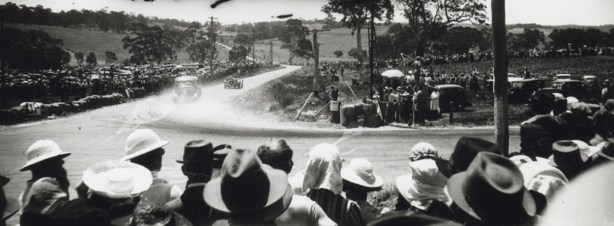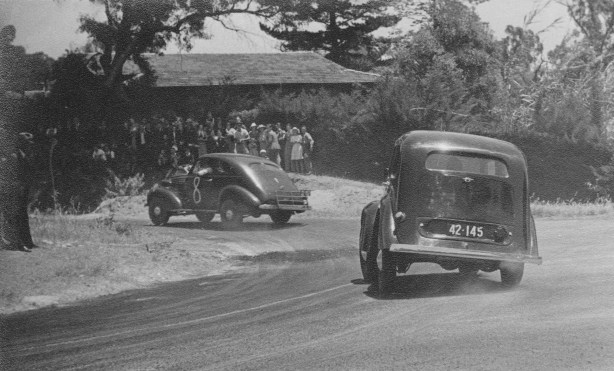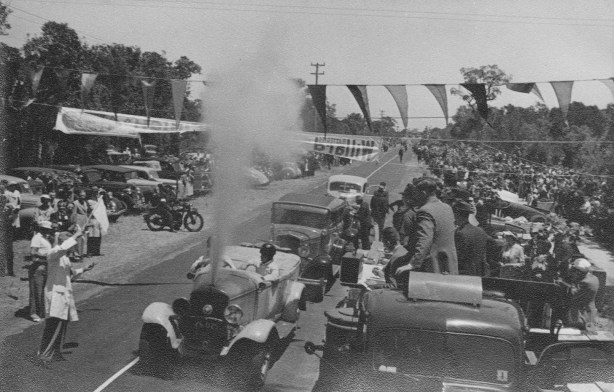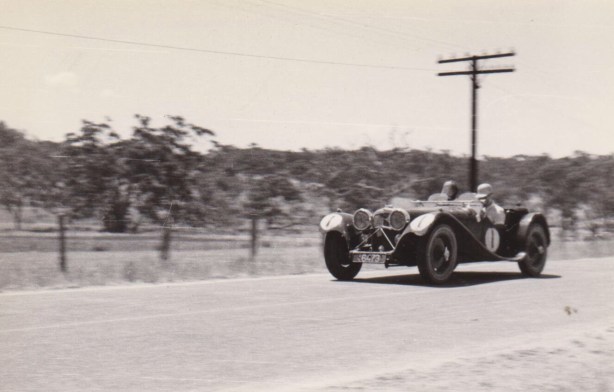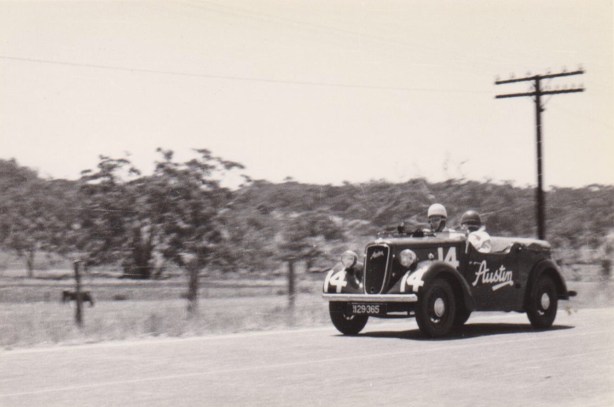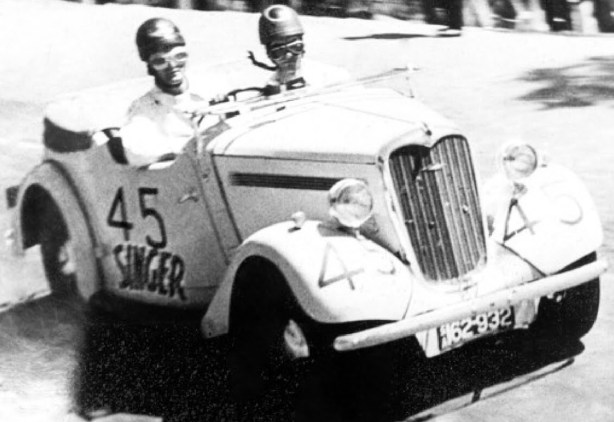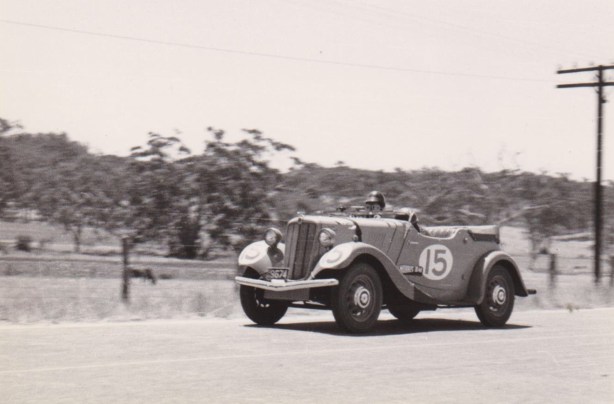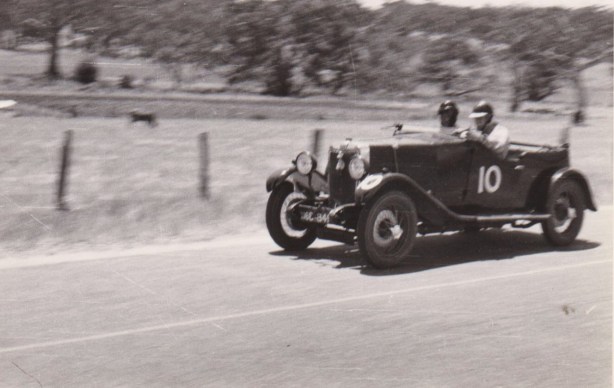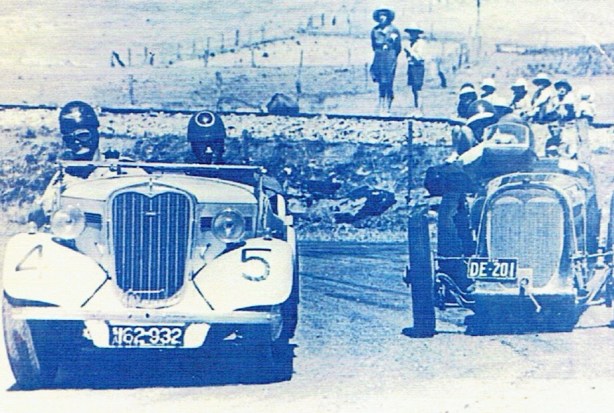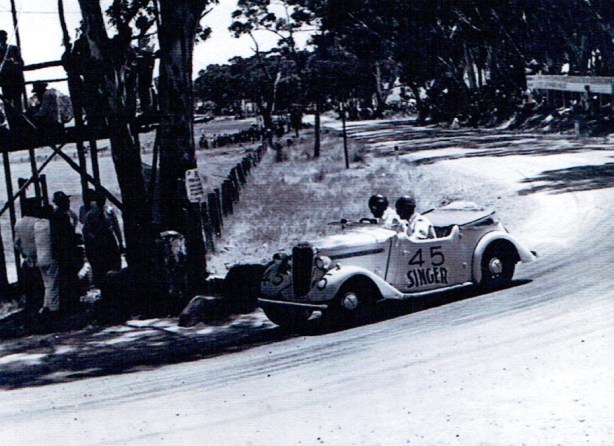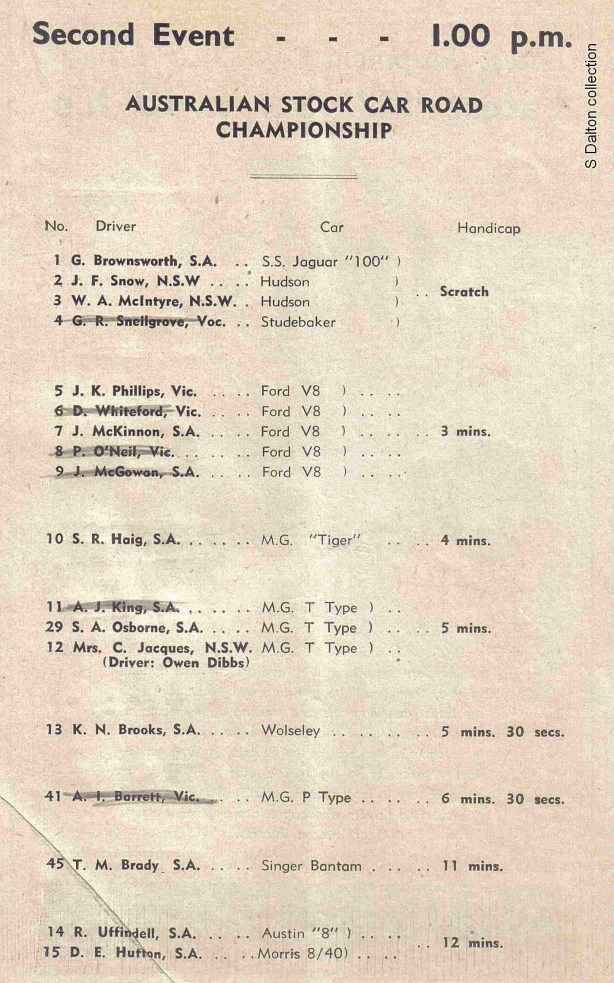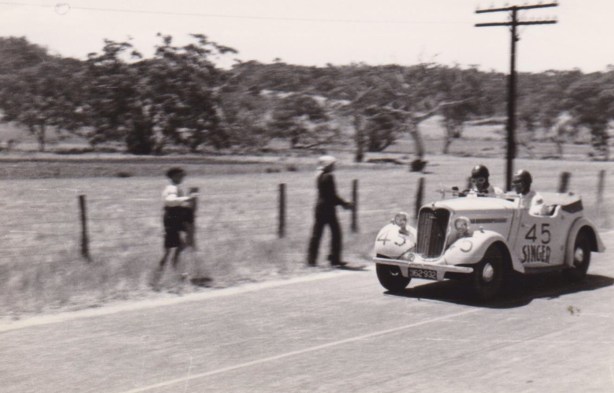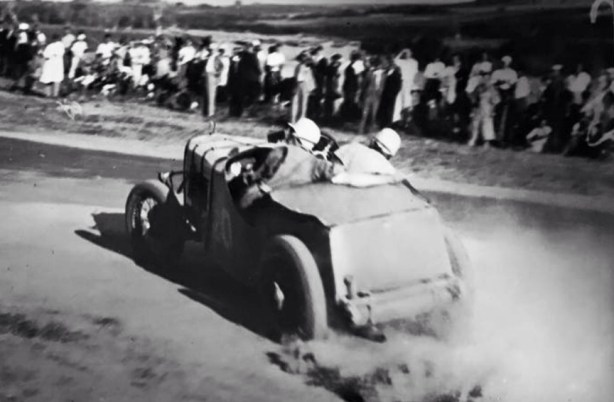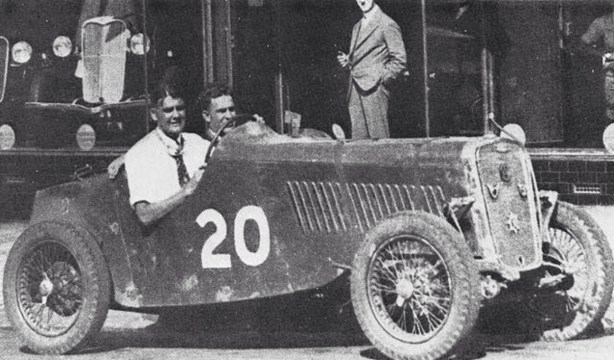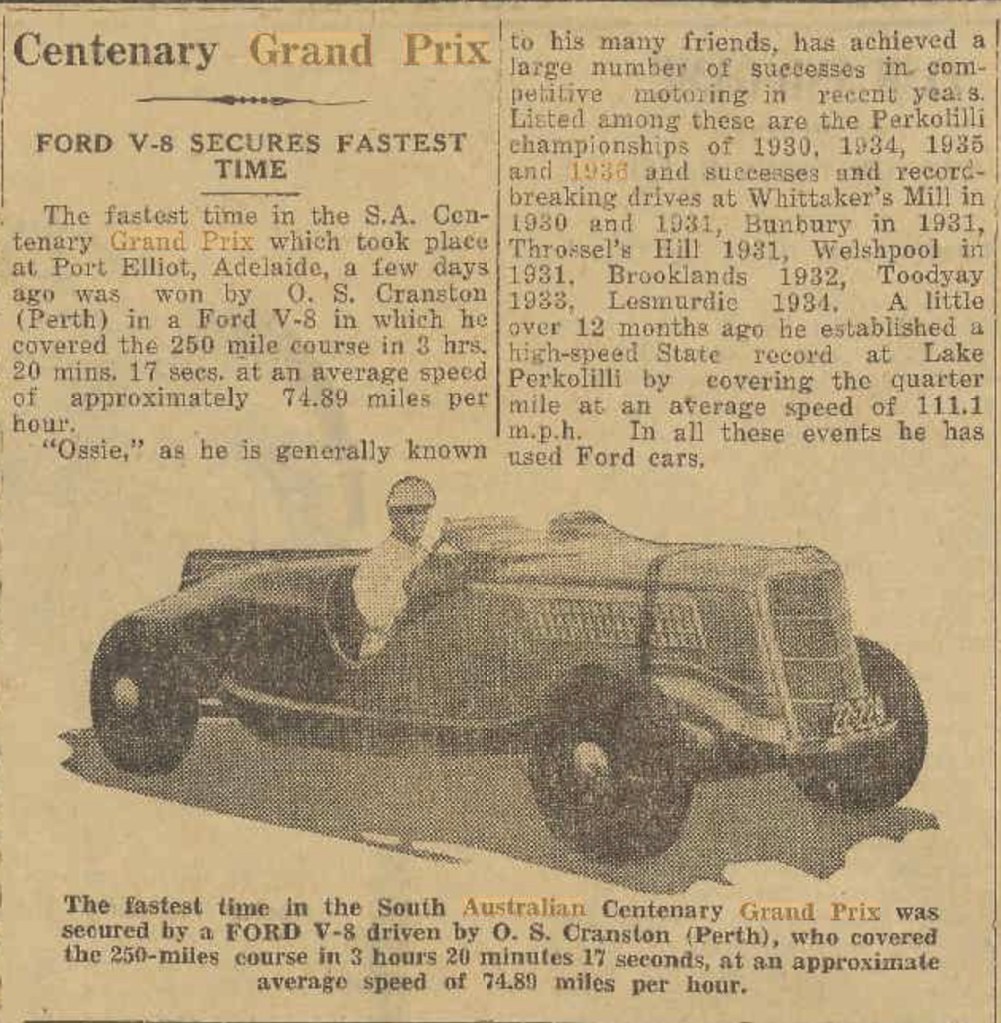
Osborne Scott ‘Ossie’ Cranston (1899 or 1903 – July 1, 1982) was one of Western Australia’s aces at a time Perth was a long way from the eastern seaboard (sic).
To race his Ford V8 Special in the December 26, 1936 South Australian Centenary Grand Prix (the 1936 Australian Grand Prix) at Victor Harbor required shipping his car on the interstate passenger liner, the Manoora, on the Tuesday before the race, from Fremantle to Port Adelaide. A trip to Melbourne is a lot further and Sydney even more. So race-fans in the more populous states of the nascent country of Australia didn’t see many of the faster West Australian cars, despite their thriving motoring scene.

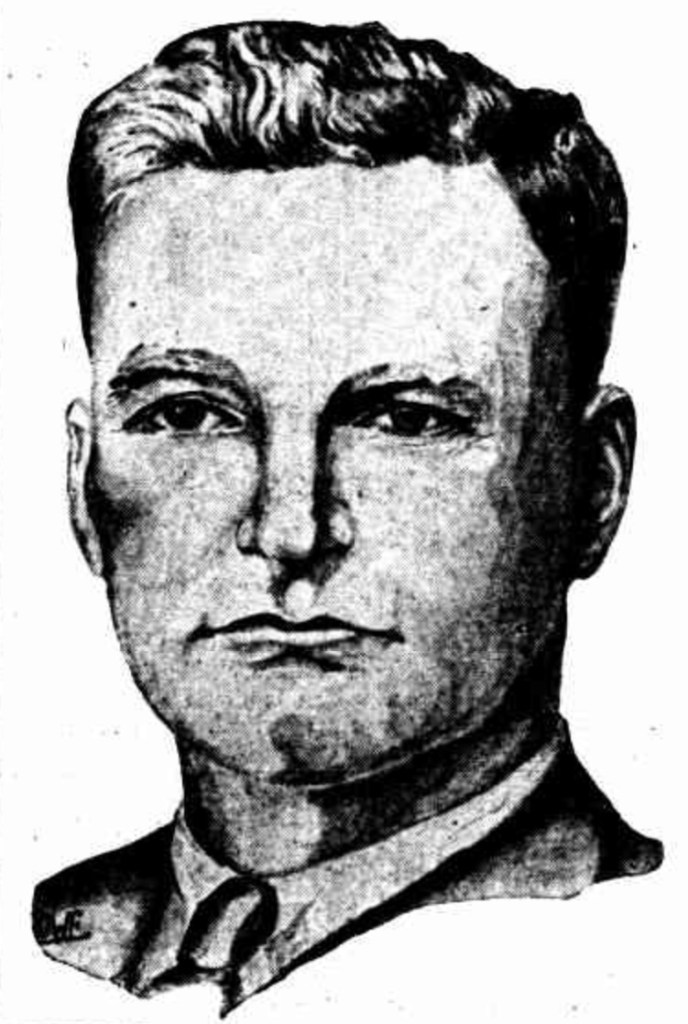
In that sense, Cranston’s Victor Harbor (correct spelling) achievement was a great one over the more fancied Bugatti T37As, MG K3s, Frank Kleinig’s Kirby Deering Special and Hudson Special (he raced the latter) and Jack Phillips’ Ford V8 Special. Not that Cranston won the race.
Australian Grands Prix, until the dawn of the 1950s, were handicap events given the shortage of racing cars spread across a huge space – Australia is a big joint, have a look at a map one day – and the vast disparity in performance between those cars. Cranston did the fastest elapsed time but finished sixth on handicap. Les Murphy won the 250 mile race in an MG P-Type. See here for a long epic on this race around a rectangular 7 4/5 mile, sandy-gravel course, between Victor Harbor and Port Elliot. ‘South Australian Centenary Grand Prix’ 26 December 1936 aka 1937 Australian Grand Prix…… | primotipo…


Cranston’s car started life as a 1935 model (1933 in some references) Ford V8 utility. It was then modified with a light racing body – the long tapered body with fin atop was fitted in 1935 – magneto ignition, competition exhaust manifold, flattened road springs and two Winfield carburettors in place of the single standard item. “Otherwise”, the ‘papers of the day reported, “the car is identical with the Ford V8s sold by Lynas Motors Ltd”, the Hay Street, Perth, Ford dealership of which Cranston was a partner/shareholder with V Lynas and J Victor Pascoe. Later fitted the with a ’36-model radiator, it was then erroneously and continuously called a ‘1936 car’.
I won’t repeat the successes of the car at Lake Perkolilli and other Western Australia venues already outlined in the opening image.
Cranston grew up in the comfortable surroundings of Swanbourne Beach. He began his working career as an apprentice mechanic with Grave and Dyer, working on Standard and Imperial cars. The business was Perth’s first Ford Dealer, over 15 years he rose through the ranks to become Works Manager. From there, Cranston was recruited by Ford as Works Superintendent of their assembly plant at North Fremantle. Later, he and his partners, former colleagues from Grave and Dyer, formed Lynas Motors Ltd.

In 1917 (or 1919) Ossie took up motorcycle racing, he won his first competitive race, the three-mile Charity Handicap at the WACA, riding a Triumph “in a brilliant performance for a novice.” He raced mainly on the grass tracks at Claremont Showground, Loton Park and on the road riding Indians and Triumphs for the Armstrong Cycle and Motor Agency. Six track/road championships followed, one “was recognised by Triumph in England with a gold medal and a particularly eulogistic letter of appreciation,” the Sunday Times wrote.
A large crash at Claremont in 1922 encouraged a shift to four-wheels. While still at Grave and Dwyer, he initially drove a Ford Model-T in hillclimbs, setting many fastest times in a car affectionately nicknamed ‘Heza Henry’. Hez had a hand-formed, torpedo-shaped rear which incorporated ‘guards for the road which were removed for competition work. It did 68mpg on the Perkolilli claypan in 1927.
With the introduction of the Model-A, Ossie built up ‘Cactus’. It had a less refined vinyl boat-tail body than Heza, from the dashboard back, two bucket seats and a fairing in front of the driver. Various engines were fitted along the way but the body was a constant.
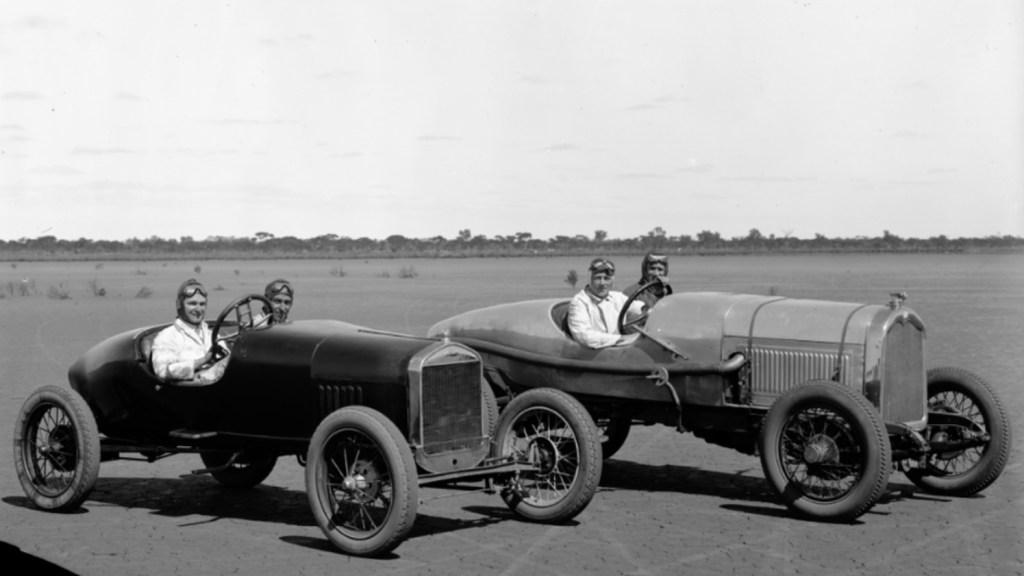
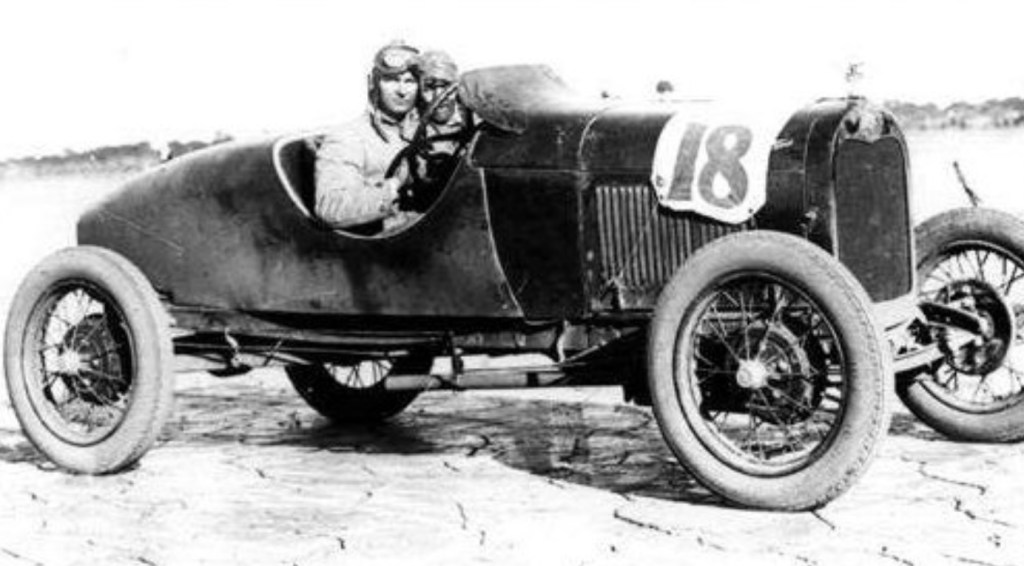
Well suited to hillclimbing but not so much Perkolilli’s long curves, he still finished third behind the Armstrong driven Auburn and Colliver Chrysler in the RACWA State 20 Mile Championship in 1929. He won the 10 Mile handicap that day too, claiming that the car was capable of 100mph. Cranston went one better in 1930 taking 10 Mile Lake Perkolilli State Championship.
The 3.3-litre, four cylinder, side-valve – for a while supercharged – engine had a range of modifications to the cylinder head, carburetors, intake and exhaust systems and a taller top (third) gear fitted to Ford’s coupe.
Further success ensued throughout 1931-32 at Whittakers Hill, North Dandalup, Lake Pinjar, Bunbury Beach, and Whittakers and Greenmount Hills. By late 1931 Cactus maxxed out at 89 mph to win the flying quarter-mile event at Wattle Grove.
In 1932 the Brooklands Speedway opened (on the West Subiaco aerodrome site), where Perry Lakes and the Uni WA sportsgrounds are today. Brooklyn had only a short commercial life, but Cranston – belted pretty hard by the handicappers – set a four-lap record for the one-mile, limestone track in 4 mins 38 secs in 1932, not too long before Cactus was retired.
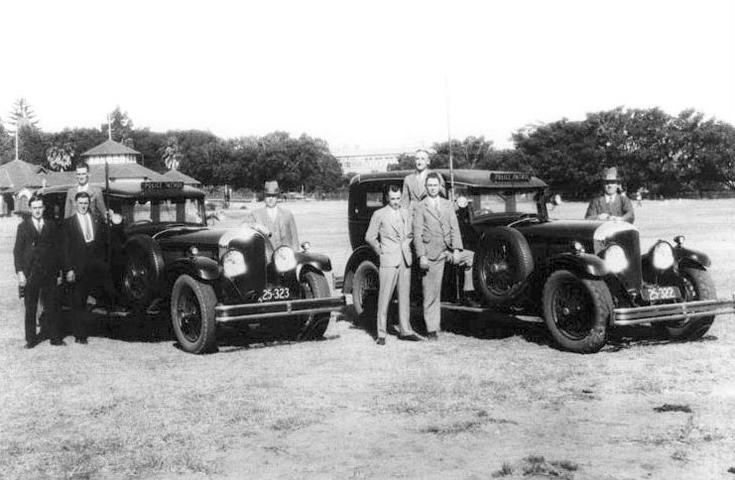
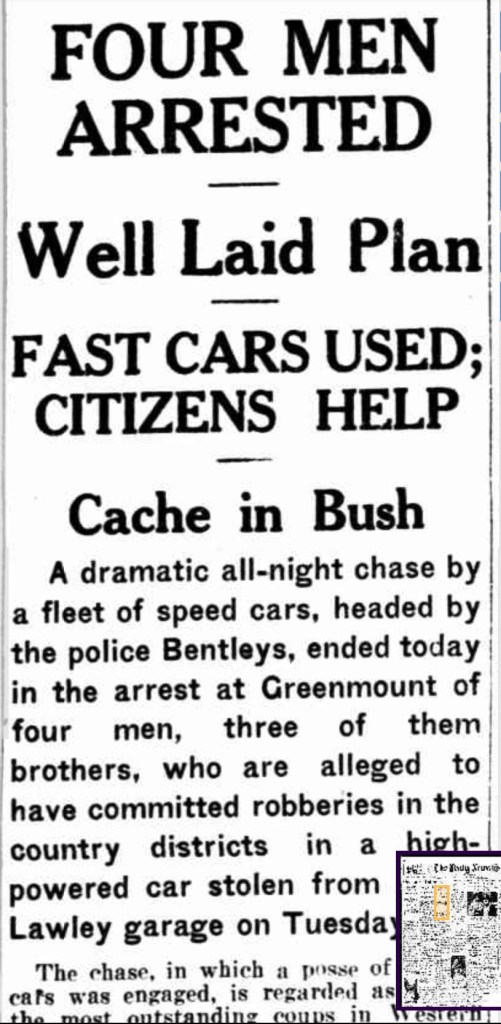
One of the more bizarre days of Cranston’s long life was a police invitation for he and Cactus to join a posse of cars to help catch some baddies in September 1933. Said crooks were committing smash and grab robberies in the country, then escaping in a stolen, fast, ‘high powered car’.
The police generals figured they needed more pursuit cars capable of in excess of 80mph, than their two 6.5-litre Bentley Speed Sixes. Yes folks, the WA police were the only wallopers on the planet to have these expensive blue-bloods as patrol cars. The plan was to create a cordon around Perth to chase down and catch the dirty-rats. So, some racers were recruited as Deputy Sherriffs including OS Cranston.
While Cactus wasn’t involved in a high speed chase, the four-perps (police talk I believe) ran off the road alongside where Cactus was parked, near the gate of the national park at Greenmount (23km east of Perth). They were arrested with a cache of stolen goods found close by.
In another bizarre, only-in-Australia moment, the handcuffed crooks were kept warm beside a fire lit by the coppers while Cranston high-tailed it back to Perth in Cactus. The Bentleys had radios, no other WA police cars did, Ossie’s mission was to give the good news to senior police and organise a patrol car to take the shaken, but warm robbers back to the city lock-up…
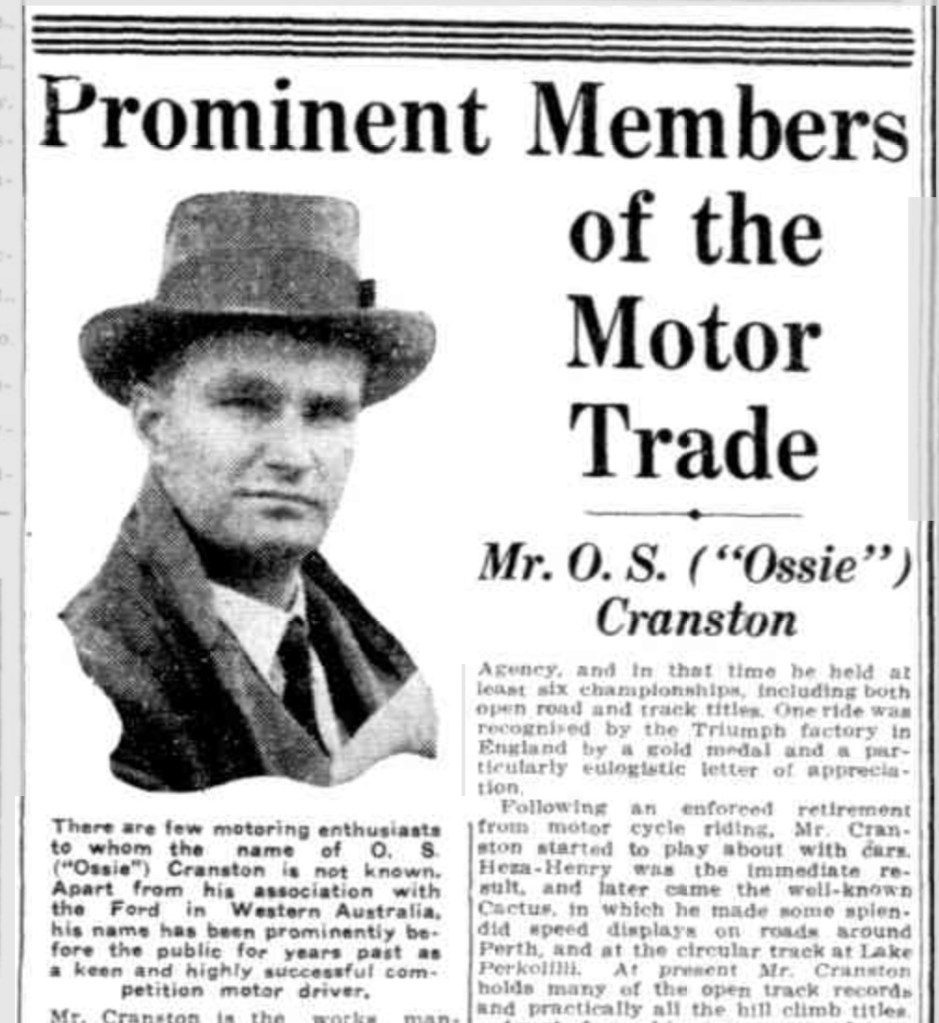
By 1934 Cranston was quite the man about town too. In addition to his Lynas responsibilities he was a director of Rural Motors Ltd, Bunbury Motor Estates Ltd and General Investment Co Ltd, which provided consumer finance for Fords. He was also the director of several companies outside the motor trade.
Wearing his Lynas Motors hat Ossie travelled to ‘The Orient’ (is that term a no-no these days, one never hears it used?) in mid-1934. “Wherever you go you’ll see a Ford,” he quipped to the Perth Mirror on his return.
Cranston was amazed by the number of baby Fords in Singapore and amused that the first news he received in Ceylon was about the success of a small Ford in a local hillclimb. In Java he observed that cars were ancient, “the post Depression prices of sugar and rubber are low.”
Things were better in Singapore, Shanghai and Hong Kong. Siam made the railways pay, “with no roads between the principal centres people are forced to use the trains!”
Asked about the new Datson (sic, the machine would have been the Datsun – Nissan – Type 13) car, “a new light job similar to the 7hp units with which we are all familiar, being built in Japan.” Cranston said “I didn’t see one on the trip. Agents have been appointed in various centres of the orient, but it’s unlikely any are expected in Australia.” Not for three decades or so, in any event!
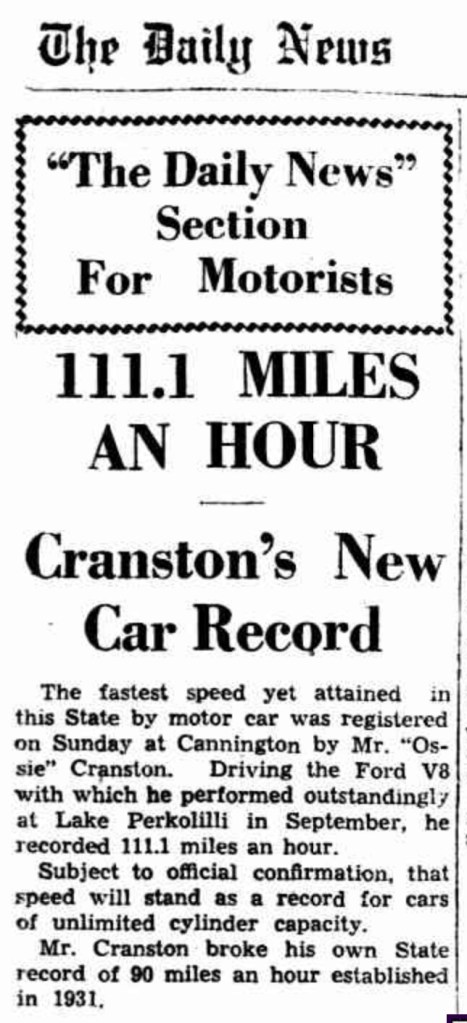

In 1934 Cranston returned to racing with the Ford V8, setting a new Australian record at Perkolilli over 10 miles (16 kilometres) at an average speed of 97.61mph (157 km/h), and later a new State record of 111.1mph (178.8km/h) over a flying quarter-mile on Nicholson Road, Cannington, beating the record set in the Model-A.
After success in the South Australian Centenary Grand Prix, held at Victor Cranston told the Motorist and Wheelman that he was retiring from racing because he was “too old”.
Ford recognised his contribution to the sport and polishing the marque’s brand via his racing exploits over a long period with the presentation of a ‘gold wristlet’ at a function of dealers in Perth in April 1937.
His final motor racing event – just before the lights-went-out in WW2 – was the Patriotic Grand Prix, held on the Applecross streets of Perth in November 1940.
Following Cranston’s decision to retire, he sold the Ford V8 racer to Bathurst Ford dealer and 1920-30s intercity record breaker Norman Aubin. John Medley wrote that Aubin prepared the cream and green car for 27-year-old local driver, George Reed to race in the 1938 AGP held at Bathurst.
Reed’s race was brief as the big car spat its fan through the radiator early on. It would be interesting to know what the young driver thought of Cranston’s car. He was to build some very fine Ford V8 Specials of his own, including the George Reed Special Warwick Pratley raced to AGP victory around-the-houses at Narrogin, Western Australia in 1951.
The ’38 AGP was won by British international Peter Whitehead’s ERA B-Type. After that Easter meeting, Aubin sold it to a Sydney buyer, who repainted it red, but it never raced again.
Another report has it that the car was sold to an eastern states competitor who was killed in it at Bathurst. The engine was fitted to a speedboat and the chassis stored for a bit before being destroyed. Does anybody know the facts?
In 1983 Clem Dwyer started the build of a replica which remains a welcome competitor in historic events.

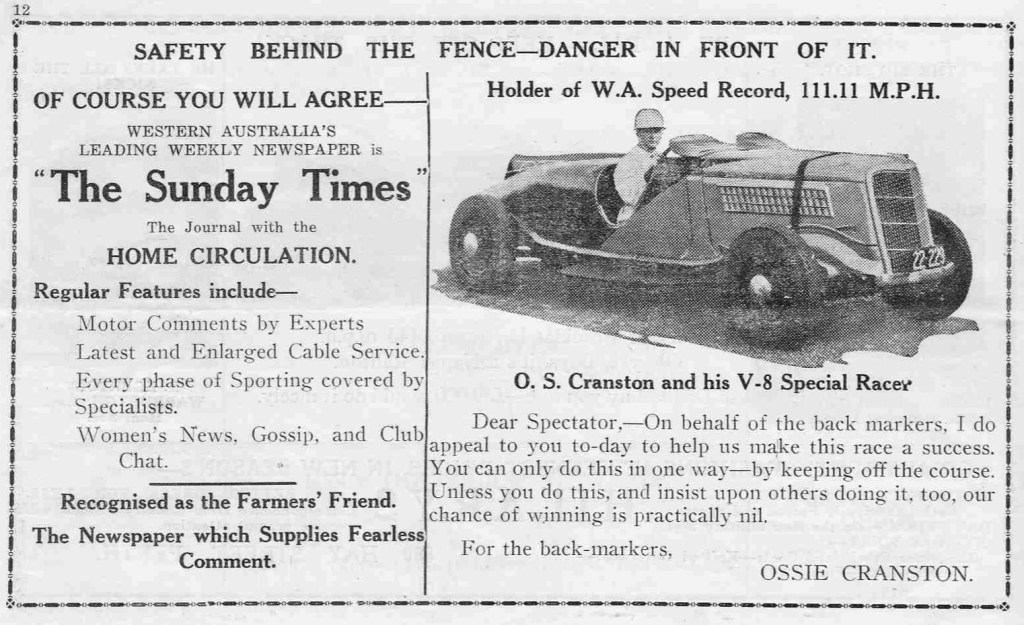
Cranston hadn’t lost his passion for motorsport though. He had built ‘Miss Frances’, a Ford V8 powered speedboat which generally “spreadeagled rivals in much the same fashion as he had been doing for years on the terrain.”
“When not tied up with one or other of the multitudinous business matters which occupy his attention, Mt Cranston golfs, his one vice.” There was another though, with the encouragement of his wife he commenced horse riding at about 40. So keen and proficient was the Mosman Park resident, that he became Master of The Hounds for the West Australian Hunt Club.
Ossie remained involved and close to motorsport. An Ossie Cranston Trophy was contested in West Australian Sporting Car Club events for years, Cranston was a stalwart of the club, formed on November 17, 1929. Together with Eric Armstrong, CS Dyer and Claude McKinley he kept the very successful organisation together in some of its more difficult years.
Cranston was ‘the official driver’ at Caversham (first used on March 13, 1948) and into the 1970s at Wanneroo Park. He died on July 1, 1982 – born in either 1899 or 1903 – his remains are at the Karrakatta Cemetery in Perth.
PS; Most of this piece was written via extractions from period newspapers. Of their nature they are light-on with the specifications of the cars. If any of you can assist in that regard, or in fleshing out Ossie’s story, do get in touch.
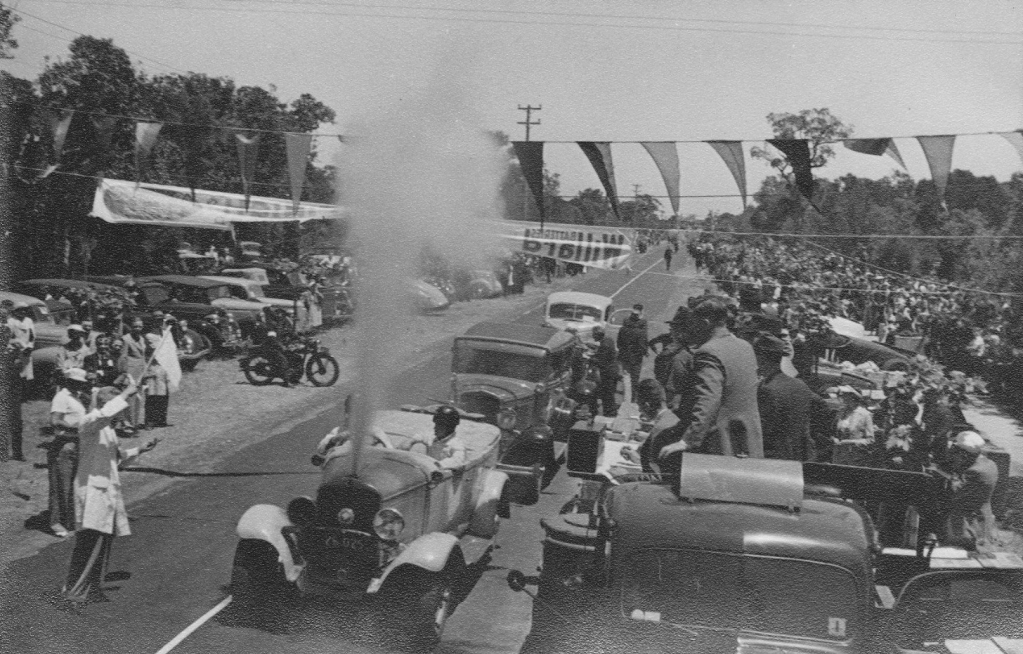
Etcetera…
It’s a Gas
Pretty much the final motor race of any size in Australia before motorsport was set aside for the duration of World War 2 was the Patriotic GP, attended by a “huge crowd” at Applecross on November 11, 1940.
In his return to racing, Cranston ran a ’38 Ford in the novel, Producer Gas Race for stock, or standard cars. Ossie finished second in this handicap behind WJ Stitt’s De Soto straight-eight.
Interesting, perhaps – in the context of fuels of quite dissimilar quality, and the use of gas to power cars during the conflict – is the difference in performance between Ron Possetts’s petrol fuelled ’39 Ford V8, which won the stock (standard) car race and Ossie’s machine. Possett’s (rated a very good driver) best lap was 3 min 12 sec, and Cranston’s 3.44.
“The hilly course was a good test, the contest admirably fullfilled its purpose, which was to demonstrate that the sacrifice of performance made by the use of producer gas, is small,” wrote the South Western Advertiser.
The ‘Tisers’s journo continued, “A most interesting feature of Cranston’s car was that the ‘gas-works’ were all enclosed; producer, cleaners, pipes etc were all hidden, in the luggage trunk, beneath the bonnet or under the floorboards, and, except for cooling-louvres in the lid of the rear compartment, the big modern sedan had the appearance of a standard petrol model.”
All we need now is a happy-snap of the car, can anyone oblige?
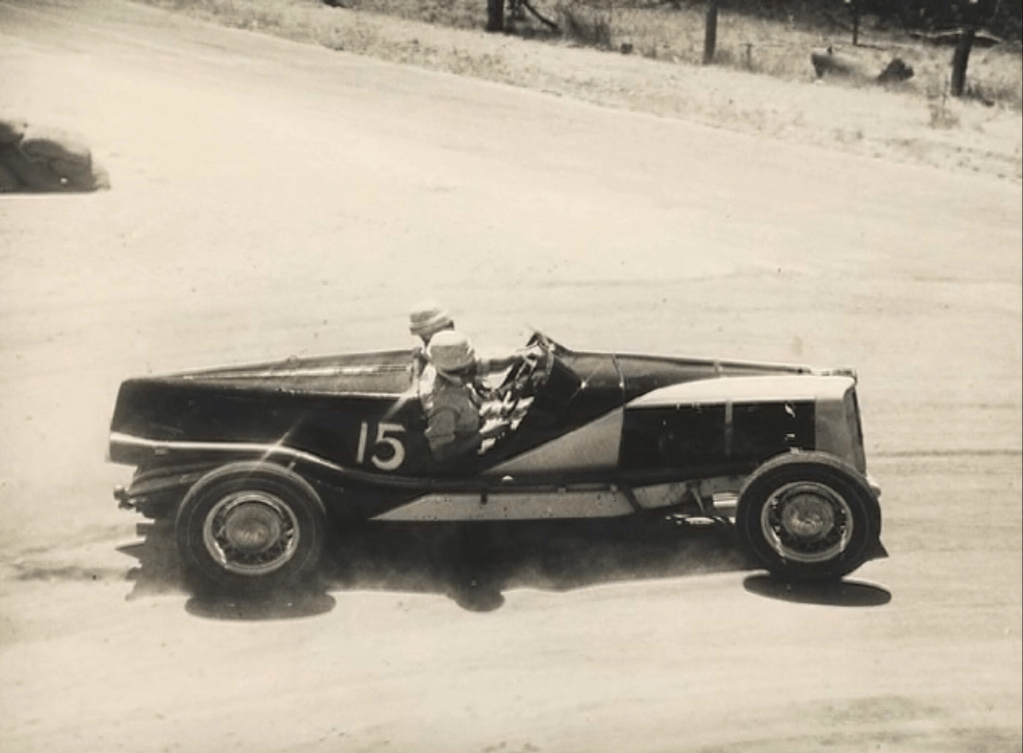
Top Gun?
Looking at the performance of Ossie’s car, it has to be a contender for fastest-best Australian Ford V8 racer in that pre-war period?
Jack K Phillips’ similar machine (above) has to be in the mix too. He too was a Ford dealer, in Wangaratta, Victoria. Yep, I’ve heard of Black Bess, while built pre-war, Whiteford didn’t get her performing well until after the conflict.
The Cranston and Phillips cars were Special Ford V8s rather than Ford V8 Specials. That is they were modified Fords, rather than a concoction of parts of various makes powered by modified Ford V8s.
I’m interested to hear from those of you who know about such things, which car was the quickest-best Ford V8, and quickest-best Ford V8 Spl pre-war?

1936 Australian Grand Prix
I’ve got my great mate, Tony Johns, to thank for the wonderful loss of a couple of days researching this piece.
During his weekly State Library of Victoria research visitations, Tony came upon a snippet about the Light Car Club’s endeavours to run the 1936 AGP on a road course at Mornington, then a quiet, seaside village, 70km from Melbourne.
The Phillip Island road course which hosted the AGP from 1928-1935 was on-the-nose given its dangerous nature for cars of less than 2-litres, let alone the unlimited cars which should also have been included in the fun.
I’ll get to Mornington in due course.
There was no AGP called, promoted and run as such during 1936. The December 26, 1936 South Australian Centenary Grand Prix was later appropriated as an AGP – I’ve no issue with that – but the nincompoop(s) who did so, determined that a race held in 1936 was the 1937 Australian Grand Prix. WTF etc.
I’m on a one-man crusade to right this wrong, that is, the 1936 AGP event was the one at Victor. There was no AGP called, promoted and run as such in 1937 either. If we want to anoint one significant race held in 1937 as a part of the pantheon of AGP’s I’ve an open mind, send me your ideas and justifications…See here; 1936 Australian Grand Prix, Victor Harbour… | primotipo…
Anyway, in Troving (Trove is a digital record of Oz newspapers) with search-words like ‘Mornington 1936 Australian Grand Prix’, up popped the article which starts this piece. I’ve very much enjoyed writing it, knowing little about Mr Cranston and his achievements two days ago…
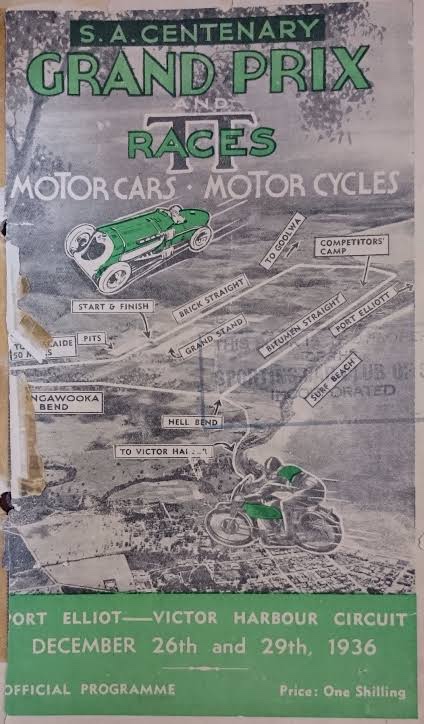
Port Victor
The poor old South Australians can’t make their minds up about Victor Harbor.
We Australians adopted the Pom’s version of English on the basis that as they invented it they should have half-a-clue about how stuff should be spelt.
Despite that, the township of Victor Harbor, rather than Victor Harbour, was proclaimed in 1914, for reasons almost as obscure as those related to the year in which the 1936 AGP was held.
Clearly the author of the South Australian Centenary meeting programme was confused too. Despite the race being held in Victor Harbor, the event was contested, seemingly, on the Port Elliott-Victor Harbour Circuit.
Credits…
The Blackwood Times, Friday January 15, 1937, Sunday Times Perth June 30, 1935, Mirror Perth July 7, 1934, Kalgoorlie Miner, various many other newspapers via Trove, ‘Cactus-Work in Progress’ Graeme Cocks, State Library of WA, ‘Bathurst: Cradle of Australian Motor Racing’ John Medley, Ken Devine Collection, vintagebentleys.org, Norman Howard, Rob Bartholomaeus Collection, Bob King

Tailpiece…
When you’ve spent a good chunk of your annual capex-budget on a couple of Bentleys, the Perth Polizia PR department worked the local papers hard to ensure the Bentley Patrol bagged as much of the crime-solution-limelight as possible, however tenuous the connection between the misdemeanor and WO’s finest.
Doubtless the lissom Subiaco lass slept easy knowing the Bentleys were prowling the streets with as much stealth as Merv the Perve…
Finito…
